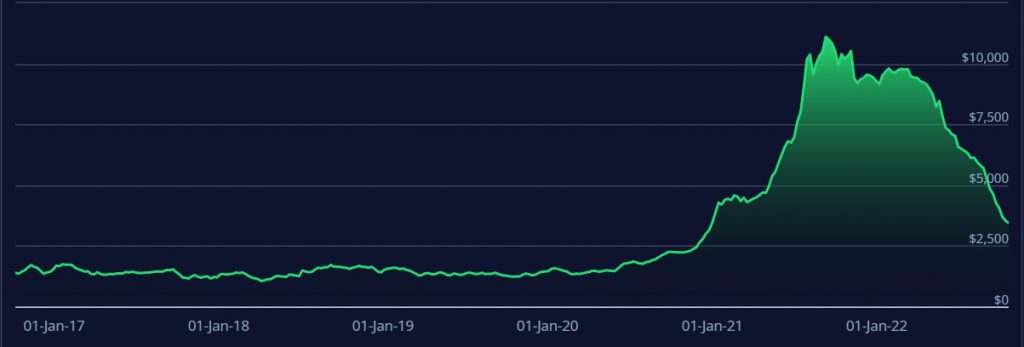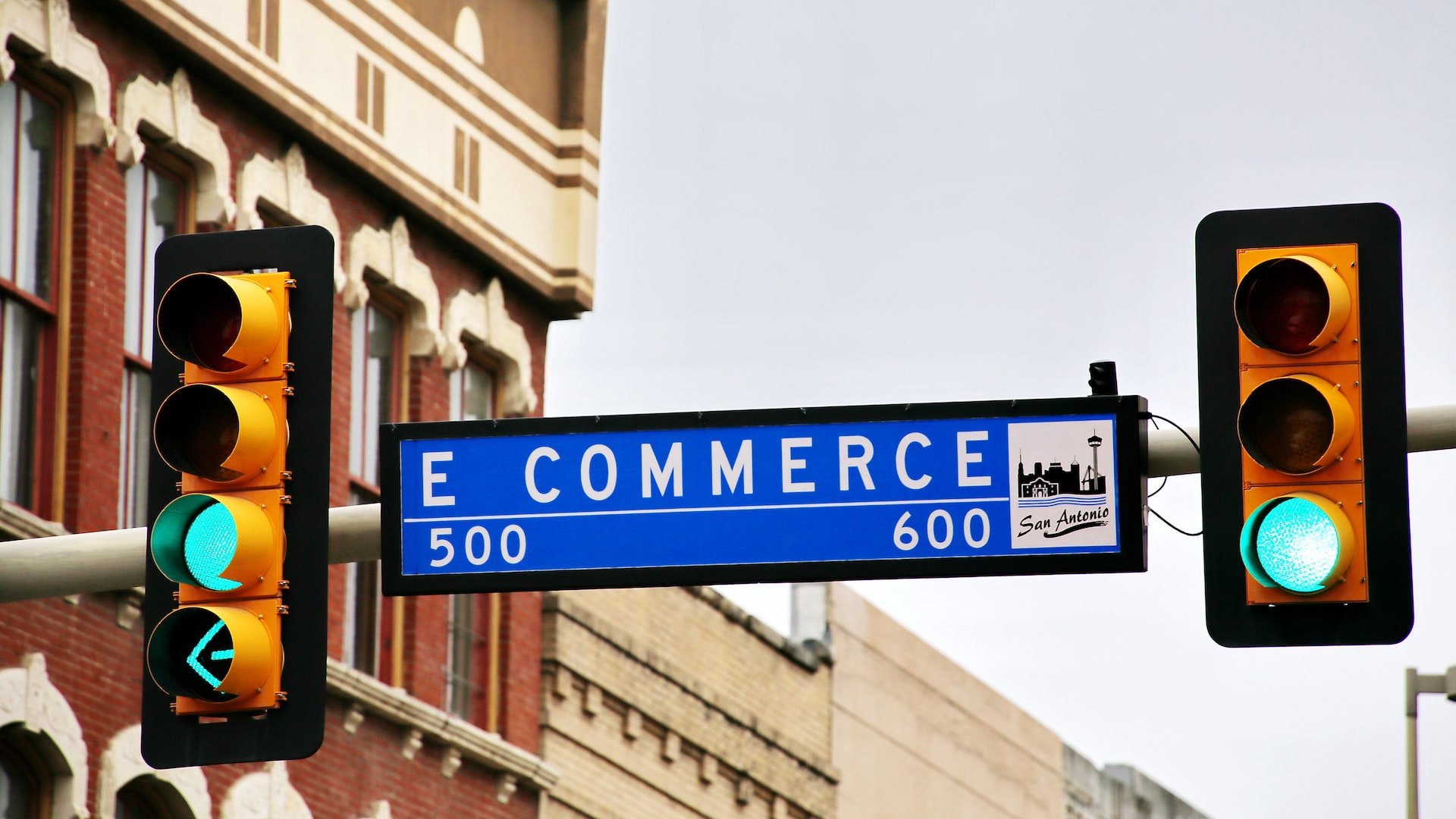Onlineshops represent a lucrative business model if set up correctly. Having their own online store is therefore a good way for many digitally affine people to earn money. However, few things in the world are free — and that also applies to e-commerce. Online store costs can vary greatly depending on the case. There is no universal answer to how much an online store costs in general. Important factors that play a role include the size and complexity of the store.
One point that many store operators regularly disregard in their financial planning is the operating costs for an onlineshop. The concept of cost optimization plays an unprecedented role for online shop operators today. According to the Federal Statistical Office, inflation in Germany was 10% in September 2022. At the same time, due to various crises around the world, the sourcing of products is becoming more and more complex and expensive, which significantly reduces the profit margin. Optimizing online store costs can make an essential contribution to the success of your online business in these times.
In this article, we will therefore systematically go into various options that can help you reduce the operating costs for your onlineshop in the long term.
Table of contents:
- Tip number 1: Take a close look at your procurement processes
- Tip number 2: Use an external e-commerce fulfillment service
- Tip number 3: Automate processes
- Tip number 4: Maintain your customer base
- Tip number 5: Reduce your product range
- Conclusion
Tip number 1: Take a close look at your procurement processes
Online trade is more global than ever these days, and procurement chains are largely based on just one factor: price. However, the countries with the cheapest products are usually not next door. Nevertheless, the longer transport route has been worthwhile up to now: additional costs for local procurement did not come close to the additional costs for transport. This looks somewhat different in 2022. A lack of resources, simmering conflicts and rising prices for oil and gas are currently posing new challenges for trade. For comparison, as recently as 2020, the price of booking a 40-foot container from China to northern Europe averaged around $1,500. Currently, the same booking costs around $3,500 - an increase of almost 133%. A look at procurement processes can therefore have a positive impact for many companies - especially if margins are very tight. But what is a healthy alternative to global sourcing? That's right: local sourcing, also called "local sourcing." This involves sourcing goods and raw materials from local suppliers. The selection may be somewhat smaller, the pure product costs somewhat higher - however, one pays less for delivery and avoids risks in the global supply chain, which are exacerbated by crises in certain regions. Local sourcing can therefore be a viable alternative for many retailers.

Tip number 2: Use an external e-commerce fulfillment service
Fully equipped warehouses, sufficiently trained personnel, suitable conditions in shipping - for material & service providers ... the list of factors for successful handling of shipping logistics is long!
If fulfillment is handled internally, this often means a large number of fixed and variable costs for the retailer - and thus an increased financial risk. To diversify this risk and benefit from better conditions, it is worth considering the use of an external fulfillment service provider:
- Your costs adapt to this: Depending on the contract, it is possible to flexibly adjust the required capacities as needed. This means you only pay for service that you actually use.
- You avoid personnel costs: In addition to pick & pack, you can also outsource additional services, such as returns processing and customer support, to service providers.
- You get better conditions for shipping and materials: External fulfillment service providers can offer interesting conditions for packaging materials due to high purchase quantities. In addition, they often have contracts with shipping service providers and also score here with competitive prices.
Of course, depending on the product type, customer audience and business model, there are numerous other factors that online store operators need to consider when choosing a fulfillment provider. If you and your company are currently facing challenges in terms of logistics fulfillment, Warehousing1 is exactly the right partner for you. With around 1,000 partner locations across Germany and Europe, we can find the perfect fulfillment provider for you and your business. Our team of experienced logistics professionals will be happy to assist you in finding the right logistics partner for your business. Together with you, we will develop a suitable logistics strategy for your business model and then support you in finding a suitable service provider.
Tip number 3: Automate processes
True to the motto "time is money", automations can save a lot of time and thus massively reduce the costs for an online shop. One of the central points for automations is logistics. After all, you don't want to look into your warehouse every day and manually check incoming and outgoing goods. A good enterprise resource planning system not only offers inventory tracking, but also other options such as automatic invoice generation or the processing of returns.
But it is not only in logistics that processes can be automated. You can also leave some communication with your customers to an electronic assistant. Sounds strange? But it is! One of the classic ways to communicate automatically with your customers is the chatbot. Here, you provide your customers with predefined question & answer paths to guide them step by step to the information they are looking for. A more modern kind of FAQ, if you will. Of course, towards the end, you should always give your customers the option of asking their question openly and without a prefabricated answer, in case they don't find the information they're looking for via the chatbot. Using further automation, this question can then be forwarded to an employee by email and then processed manually.

In general, emails are also an exciting opportunity for automated communication. Automatic updates on shipment status, back-in-stock notifications, reminders for shopping cart abandoners, or sale notifications are just a few of the possibilities for automated communication with your customer base. Some online shop operators may find it difficult at first to put processes in the hands of programs. However, after a short time you will realize how much relief you can achieve with automated processes. And after all, we all know: time = money.
Tip number 4: Work on your customer loyalty
If you want to be successful with your online store in the long term and save costs at the same time, you should pay a lot of attention to the topic of customer retention. After all, it is significantly easier and more cost-effective to maintain relationships with existing customers than to acquire new ones: A rule of thumb from various experts is that it costs about five to seven times as much to acquire a new customer than to retain an existing one. To achieve this, however, you should first know why your existing clientele is no longer buying from you. A common strategy for this is, for example, collecting feedback from the people who delete their user account. In this case, you can write a friendly and personal email, for example, and ask the person what made them do it. The answers to such surveys are absolutely worth their weight in gold and should be paid attention to in any case.
Personalized voucher campaigns are an exciting way to retain customers longer and encourage them to buy again. CRM tools such as emarsys.com can be used to create customer segments that can then be used for automated voucher campaigns.
A case study: a long-time customer suddenly stops buying from you for several months. What could be the reason for this, and how can you deal with it?
One possible reason could be a switch to a competitor who offers better prices. To win back this customer, a voucher could be a suitable lever. Of course, smooth service also plays a role. Fast shipping within 24 hours, a goodie in the package, another coupon for the next purchase, round out the customer journey. Don't take your customer base for granted. Like a plant, it needs to be nurtured and cared for.
Tip number 5: Reduce your product range
Our tip number 5 may seem a bit paradoxical at first glance - but when you take a closer look, it's not at all. Every product that you offer in your online store also needs its own storage space. And every storage space causes costs. It is therefore worthwhile for online shop operators to regularly take stock and have a look at their product portfolio. You should ask yourself the following questions:
- Do I have products in my online store which hardly sell but permanently cause costs?
- How much of my produce is seasonal compared to evergreen?
- Which of my products are particularly well received?
- Which products are absolute slow sellers?
In the medium to long term, slow-moving items can result in extremely high costs. So get an overview of your current situation, throw unpopular products out of the assortment and make room for popular products and fast-moving items. By better understanding and analyzing your customers and their tastes, you can better plan your assortment in the long term and thus immensely reduce the running costs for your online store.
Conclusion
The running costs for an online store are many and varied. But the ways to save costs for an online store are at least as varied. For operators of online stores, it is always worthwhile to regularly put their current setup to the test in order to uncover and eliminate possible cost traps. The above-mentioned options are a good starting point for identifying potential savings and optimizing the costs of your own online store in the long term. Depending on the industry, product type, business model or region, these factors can of course vary. One of the decisive cost factors for an online store can be logistics.
However, Warehousing1 is happy to support you in organising the logistics of your online shop. In a free initial consultation, we can discuss exactly what your requirements are and how they can be solved. Through our network of over 1,000 warehouse locations, we identify the perfect fulfilment & storage solution for you and your business. By selecting the optimal warehouse locations and processes, you can reduce your fulfilment costs by up to 50%. Make an appointment for a personalised one-on-one meeting today. Send us an enquiry - one of our customer advisors will get back to you within 24 hours.



